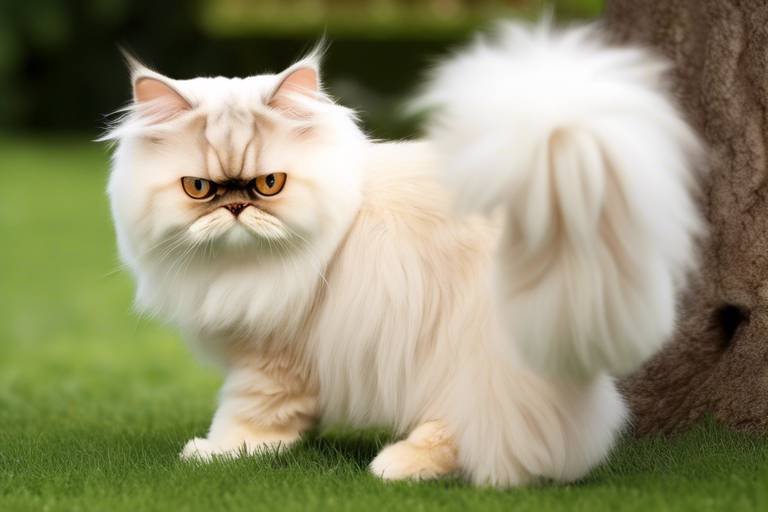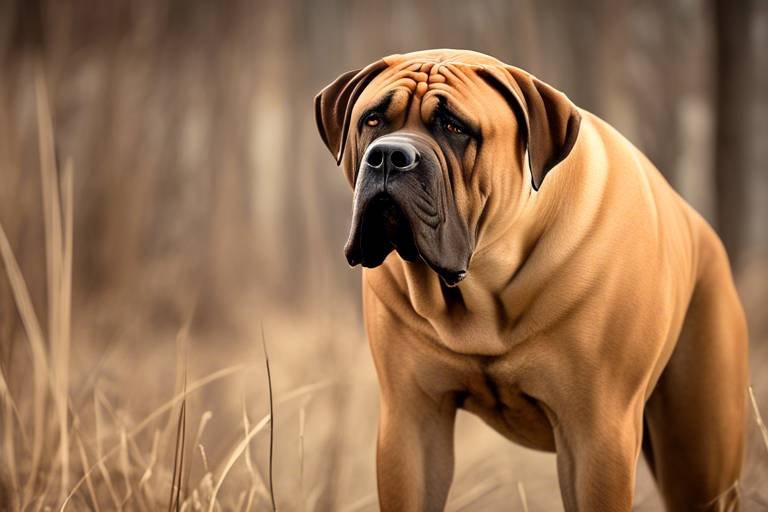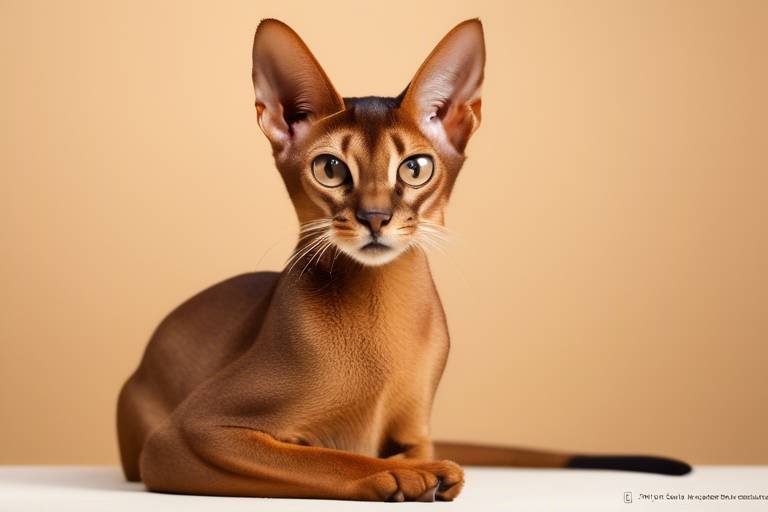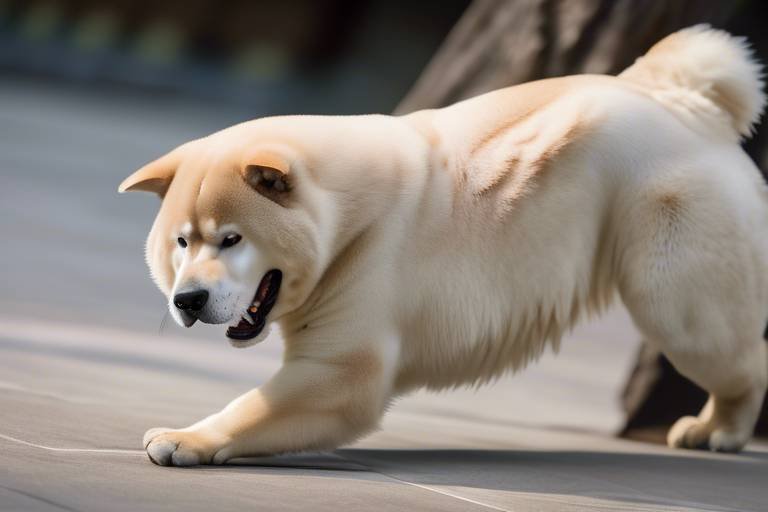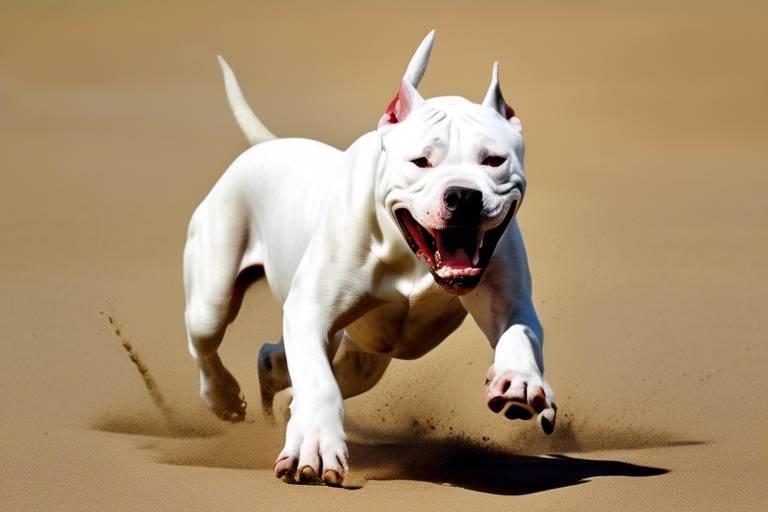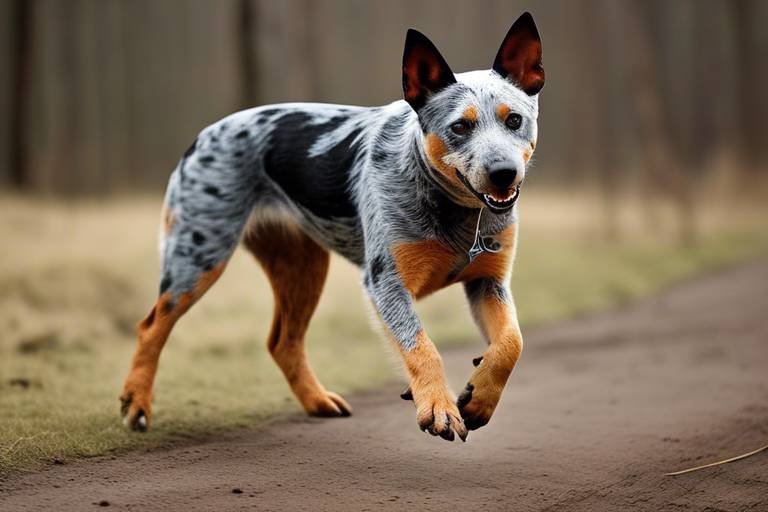Understanding the Different Types of Persian Cats
Persian cats are not just any ordinary felines; they are a blend of elegance, charm, and personality that captivates cat lovers worldwide. With their luxurious coats and unique features, these cats have carved a niche for themselves in the hearts of many. But did you know that there are different types of Persian cats, each with its own distinct characteristics? In this article, we will explore the various breeds of Persian cats, diving deep into their unique traits and what makes each type special. Whether you’re a seasoned cat owner or a curious newcomer, understanding these differences can help you appreciate the beauty and diversity within this beloved feline family.
Delving into the rich history of Persian cats reveals their origins and how they became one of the most popular breeds worldwide. These enchanting creatures trace their roots back to ancient Persia, now known as Iran, where they were revered for their beauty and grace. Over the centuries, Persian cats have traveled across continents, adapting to various cultures and lifestyles, which has only enhanced their allure. Their journey through time has not only shaped their physical characteristics but has also influenced their personality traits, making them the affectionate companions we know today.
One glance at a Persian cat, and you’ll immediately notice their distinct physical traits that set them apart from other breeds. They are known for their long, flowing fur that requires regular grooming, flat faces that give them a unique appearance, and large, expressive eyes that seem to hold a world of mystery. These features not only add to their beauty but also contribute to their overall charm. But what exactly makes them so special? Let’s break it down:
- Long Fur: Their luxurious coat is a hallmark of the breed, making them look regal and sophisticated.
- Flat Faces: This distinctive feature is often referred to as "brachycephalic," which means they have a short skull shape.
- Large Eyes: Their big, round eyes can come in various colors, adding to their expressive nature.
Persian cats come in a stunning array of colors and patterns, making it easy to find one that suits your personal style. The variety is not just for looks; each color and pattern has its own significance in terms of breed standards. From solid colors to intricate patterns, the diversity is truly breathtaking. Let’s take a closer look at some of the most common variations:
Solid-colored Persian cats are striking and elegant, showcasing a uniform hue that exudes simplicity and sophistication. Common solid colors include:
- White: Pure and pristine, white Persians often have striking blue or copper eyes.
- Black: A classic choice, black Persians have a glossy coat that shines under the light.
- Blue: This grayish-blue hue is both unique and captivating, making blue Persians stand out.
Patterned Persian cats, such as tabbies and bicolors, offer delightful visual diversity. The patterns can range from classic stripes to intricate spots, each telling its own story. Some popular patterned variations include:
- Tabby: Characterized by stripes, spots, or whorls, tabby Persians have a playful and lively appearance.
- Bicolor: These cats feature a combination of two colors, often with a white base and a colored pattern, creating a striking contrast.
Understanding the personality traits of Persian cats is essential for potential owners. These cats are known for their calm and gentle demeanor, often described as affectionate companions. They enjoy lounging around the house, soaking up the sun, and spending quality time with their human friends. However, they can also be quite playful, engaging in gentle play with toys or even a feather wand.
Caring for a Persian cat requires specific grooming and health maintenance practices. Their long fur needs regular brushing to prevent matting and tangles, while their flat faces may require special attention to ensure their eyes remain clean and free from tear stains. Learning about their care needs is essential to keep them healthy and happy.
Regular grooming is crucial for Persian cats due to their long fur. Investing in the right grooming tools, such as a wide-toothed comb and a slicker brush, can make a world of difference in maintaining their beautiful coat. Aim for daily grooming sessions to keep their fur looking its best and to bond with your feline friend.
Persian cats are prone to certain health issues, including respiratory problems due to their brachycephalic nature and kidney disease. Regular vet check-ups and a healthy diet are essential to ensure a long, healthy life for your feline friend. Being aware of these common health concerns can help you take preventative measures and provide the best care possible.
Selecting the perfect Persian cat involves understanding your lifestyle and preferences. Consider factors such as your living situation, activity level, and the time you can dedicate to grooming and play. This thoughtful approach will help you find a companion that fits seamlessly into your life.
Deciding whether to adopt or purchase a Persian cat is significant. Each option comes with its own set of pros and cons. Adoption can be a rewarding experience, giving a home to a cat in need, while purchasing from a reputable breeder ensures you know the cat's lineage and health history.
If you choose to purchase a Persian cat, finding a reputable breeder is essential. Look for breeders who prioritize the health and well-being of their cats, provide proper documentation, and are willing to answer any questions you may have. A responsible breeder will help you find a healthy and well-adjusted kitten or adult cat.
Here are some common questions about Persian cats:
- How often should I groom my Persian cat? Daily grooming is recommended to prevent matting.
- Are Persian cats good with children? Yes, they are generally gentle and affectionate, making them great companions for kids.
- Do Persian cats require special diets? It's essential to provide a balanced diet tailored to their specific health needs.
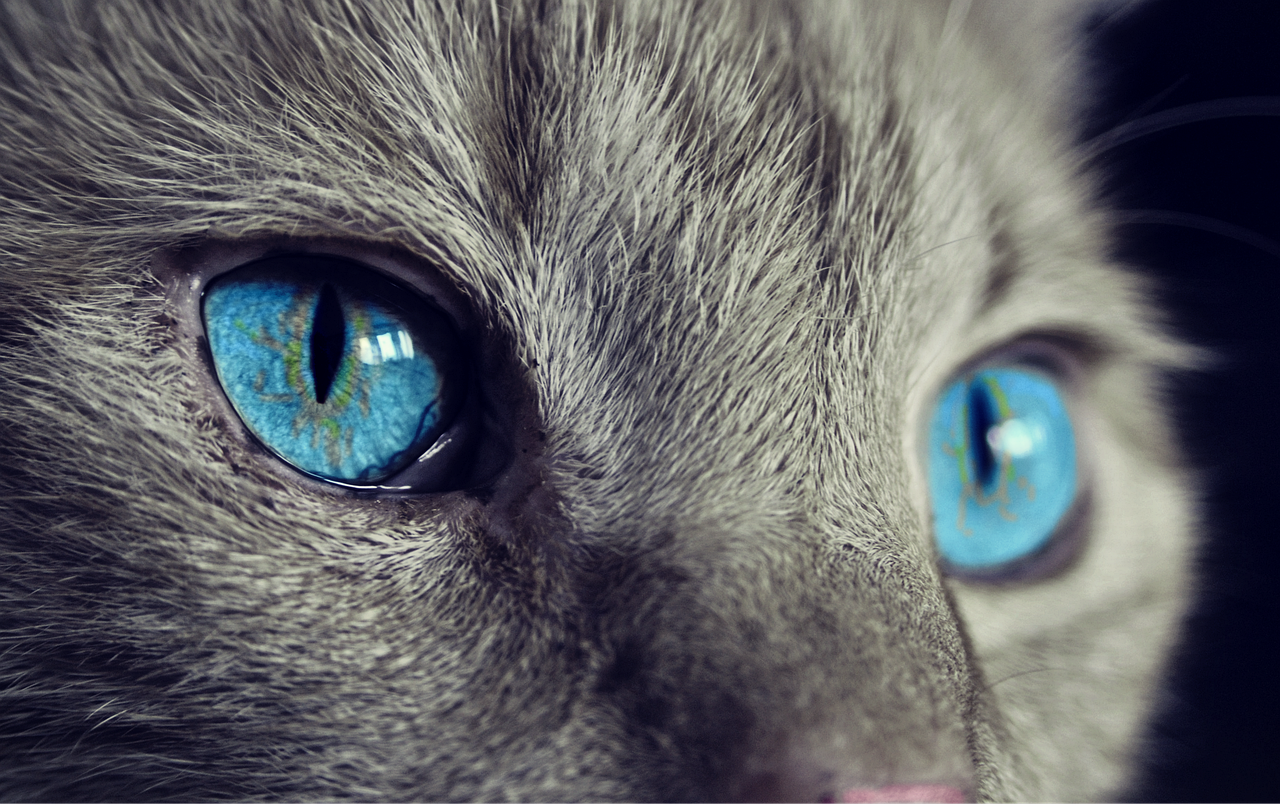
History of Persian Cats
The history of Persian cats is as rich and intricate as their luxurious fur. These beloved felines can trace their origins back to the ancient civilizations of Persia, now known as Iran. It's believed that they were first brought to Europe in the 1600s, thanks to traders and explorers who were captivated by their beauty. Imagine a time when these cats strutted through the courts of royalty, their long, flowing coats shimmering in the sunlight, captivating all who laid eyes on them.
Throughout history, Persian cats have been associated with luxury and elegance. They became a symbol of status among the elite, often depicted in paintings and literature as the epitome of grace. Their presence in royal households was not merely for companionship; they were also admired for their striking appearance and gentle demeanor. As time passed, the Persian cat gained popularity across Europe and, eventually, the world.
Interestingly, the breed has undergone several transformations over the years. In the early 20th century, breeders began to selectively breed Persian cats for specific traits, leading to the distinct flat-faced appearance we see today. This change was met with mixed reactions; while many adored the new look, others were concerned about the health implications of such drastic alterations. Today, the Persian cat remains one of the most popular breeds globally, cherished for both its beauty and affectionate nature.
To truly appreciate the history of Persian cats, one must also consider the cultural significance they hold. In Persian culture, cats are often revered and celebrated. They symbolize good fortune and are believed to bring happiness to households. This cultural reverence has undoubtedly contributed to the breed's enduring popularity.
As we delve deeper into the timeline of Persian cats, we can highlight some key milestones:
| Year | Event |
|---|---|
| 1600s | Persian cats are introduced to Europe. |
| 1800s | The breed gains popularity among European aristocrats. |
| 1900s | Selective breeding leads to the distinct flat face. |
| Present | Persian cats remain one of the most beloved breeds worldwide. |
In conclusion, the history of Persian cats is not just a tale of a breed; it's a story of cultural significance, transformation, and enduring popularity. Whether they are lounging in the lap of luxury or playfully chasing a ball of yarn, Persian cats continue to enchant us with their unique charm and beauty.
- What is the origin of Persian cats? Persian cats originated from Persia (modern-day Iran) and were introduced to Europe in the 1600s.
- Why are Persian cats so popular? Their luxurious fur, gentle temperament, and historical significance contribute to their popularity.
- How have Persian cats changed over time? Selective breeding has led to their distinctive flat faces and unique appearance.
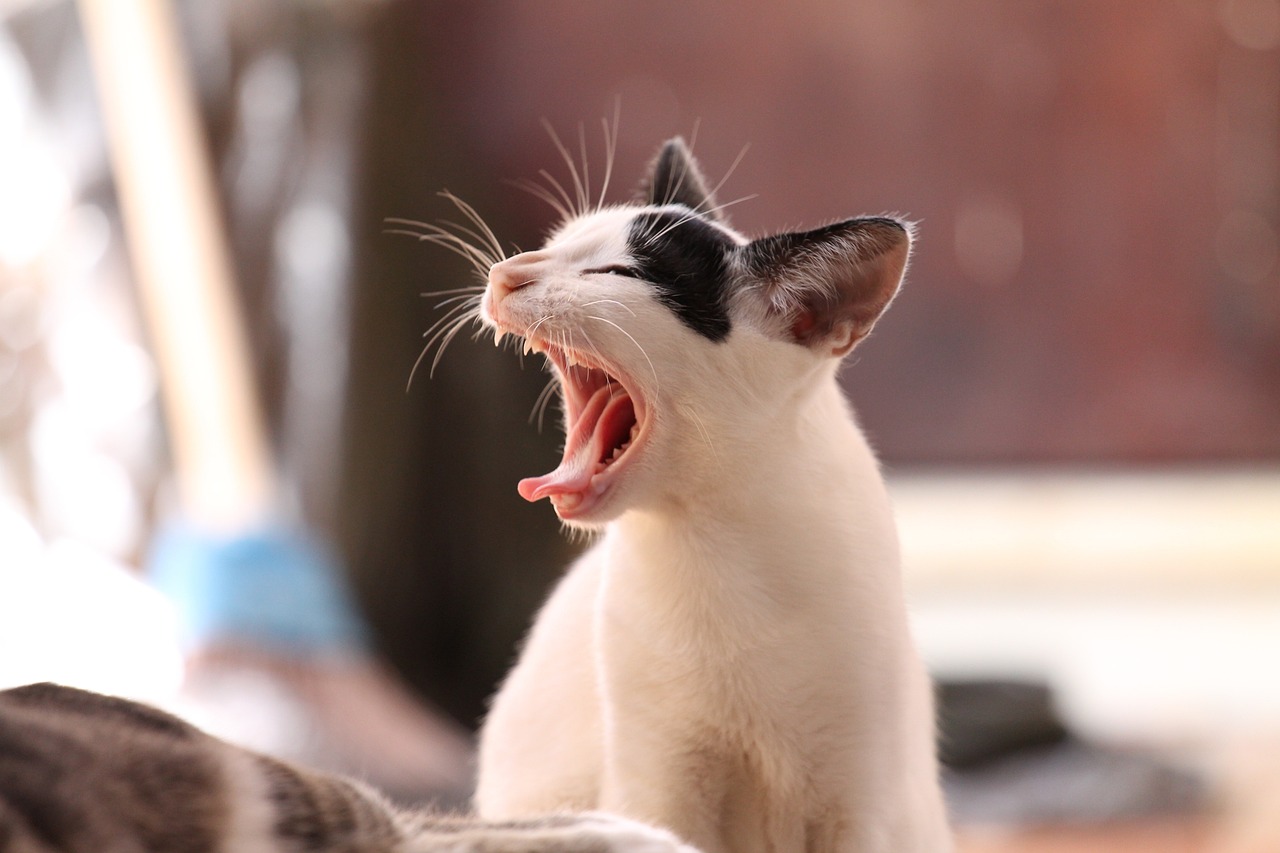
Physical Characteristics
When you think of Persian cats, the first image that likely comes to mind is that of a fluffy, elegant feline with a distinctive appearance. These cats are known for their luxurious long fur, which can be as soft as a cloud and requires regular grooming to keep it looking pristine. One of the most striking features of Persian cats is their flat faces, often described as "brachycephalic." This unique facial structure gives them a sweet, doll-like expression that many cat lovers find irresistible. Their large, expressive eyes can be copper, blue, or even a stunning combination of both, adding to their charm and allure.
Persian cats are not just about looks; their physical characteristics also contribute to their overall health and well-being. For instance, their short muzzles can sometimes lead to breathing difficulties, which is why it’s essential for potential owners to be aware of this trait. Additionally, the body structure of a Persian cat is typically stocky and muscular, with short legs and a broad chest, making them look quite sturdy. This combination of features creates a unique silhouette that is easily recognizable among cat breeds.
Another fascinating aspect of Persian cats is their color variations, which can range from solid shades to intricate patterns. These variations not only enhance their beauty but also play a role in breed standards. Below is a table summarizing the most common color variations found in Persian cats:
| Color Variation | Description |
|---|---|
| Solid | Includes colors like white, black, blue, cream, and more. |
| Tabby | Characterized by stripes, swirls, or spots. |
| Bicolor | A mix of two colors, often with white as one of them. |
| Himalayan | Pointed coloration with a lighter body and darker extremities. |
In addition to their stunning colors, Persian cats can also have various patterns that contribute to their unique looks. For example, the Himalayan pattern, which features a lighter body with darker points on the ears, face, paws, and tail, is particularly popular among enthusiasts. The tabby pattern, with its beautiful swirls and stripes, adds a playful touch to their appearance, making them even more captivating.
Ultimately, the physical characteristics of Persian cats are not just about aesthetics; they also reflect their personality and behavior. Their calm demeanor and affectionate nature are often attributed to their unique build and facial structure, making them ideal companions for families and individuals alike. So, if you're looking for a furry friend that combines beauty with a gentle spirit, a Persian cat might just be the perfect choice for you!
- What is the average weight of a Persian cat? Persian cats typically weigh between 7 to 12 pounds, depending on their age and gender.
- How often should I groom my Persian cat? It's recommended to groom them at least 2-3 times a week to prevent matting and keep their coat healthy.
- Are Persian cats good with children? Yes, Persian cats are generally known to be gentle and affectionate, making them great companions for kids.
Color Variations
When it comes to Persian cats, their are nothing short of breathtaking. These felines boast a stunning array of hues and patterns that not only enhance their beauty but also reflect their unique personalities. From the moment you lay eyes on a Persian cat, it’s hard not to be captivated by their luxurious coats and the rich tapestry of colors they come in. But what do these colors mean, and how do they fit into the breed standards? Let’s dive into the vibrant world of Persian cat colors!
Persian cats can be classified into two main categories: solid colors and patterned variations. Each category showcases a delightful range of choices that can make any cat lover's heart skip a beat. The solid colors are particularly striking, offering a classic elegance that many find irresistible. Imagine a fluffy ball of fur in a deep, rich black, or a soft cream that reminds you of a cozy blanket on a chilly evening. These solid colors often exude a sense of sophistication and grace.
On the other hand, the patterned variations bring a playful twist to the traditional Persian look. Patterns like tabby, bicolor, and even Himalayan have their own distinct charm. For instance, a bicolor Persian cat, with its striking contrast of white and another color, can look like a living piece of art. The tabby patterns, with their swirling stripes and spots, add an element of fun and whimsy. Each pattern tells a story, showcasing the diverse beauty of this breed.
| Color Type | Description |
|---|---|
| Solid | Includes colors like black, white, blue, cream, and chocolate, known for their uniformity and elegance. |
| Tabby | Characterized by stripes, spots, or swirls, tabby Persians have a playful and unique appearance. |
| Bicolor | These cats have a mix of two colors, often with a white base and another color, creating a striking contrast. |
| Himalayan | Known for their pointed coloration, these cats have darker extremities and a lighter body, resembling a Siamese. |
Each color and pattern not only adds to the aesthetic appeal of Persian cats but also plays a role in their breed standards. For example, the CFA (Cat Fanciers' Association) has specific guidelines that detail what is acceptable for each color and pattern. This ensures that when you choose a Persian cat, you are not just getting a beautiful pet, but one that also adheres to the characteristics that define the breed.
In conclusion, the color variations of Persian cats are as diverse as their personalities. Whether you’re drawn to the classic beauty of a solid color or the playful charm of a pattern, there’s a Persian cat out there that matches your taste and style. So, the next time you see a Persian cat, take a moment to appreciate the intricate colors and patterns that make these cats so special!
- What are the most common colors of Persian cats? The most common colors include white, black, blue, cream, and chocolate, along with various patterns like tabby and bicolor.
- Do color variations affect personality? While color can sometimes reflect personality traits, each cat is unique. Factors like upbringing and environment play a significant role in behavior.
- How can I maintain my Persian cat's coat color? Regular grooming and a balanced diet are essential to keep their coat vibrant and healthy.
Solid Colors
When it comes to Persian cats, are often the epitome of elegance and sophistication. These felines, with their luxurious coats and striking appearances, can captivate anyone who lays eyes on them. Solid-colored Persians are characterized by their uniform fur, which comes in a variety of shades, each with its own unique charm. Imagine a fluffy cloud of color, gently purring in your lap, radiating warmth and affection. Isn’t that a delightful thought?
Among the most popular solid colors, we find:
- White: The classic choice, white Persians are known for their pristine appearance and often have striking blue or copper eyes.
- Black: With their sleek, shiny coats, black Persians exude a mysterious allure, making them stand out in any setting.
- Blue: This beautiful grayish-blue hue is often associated with tranquility and elegance, giving these cats a regal vibe.
- Red: Red Persians are vibrant and full of personality, their warm coats often reflecting their playful nature.
- Cream: Soft and subtle, cream Persians are like a gentle whisper, their light coats providing a perfect contrast to their expressive eyes.
Each color not only enhances the cat's beauty but also often reflects their personality traits. For instance, white Persians are often perceived as gentle and calm, while red Persians are known for their playful antics. This connection between color and personality makes choosing a solid-colored Persian not just a matter of aesthetics, but also about finding a companion that aligns with your lifestyle.
Moreover, solid-colored Persian cats often require special attention to maintain their stunning coats. Regular grooming is essential to prevent matting and to keep their fur looking pristine. This grooming ritual can be a bonding experience, allowing you to spend quality time with your feline friend while ensuring they look their best. So, if you’re considering bringing a solid-colored Persian into your home, be prepared for a little extra pampering and attention!
In conclusion, solid-colored Persian cats are not just pets; they are a statement of style and grace. Their captivating presence and unique personalities make them a cherished addition to any family. Whether you’re drawn to the classic elegance of a white Persian or the striking beauty of a black one, these cats are sure to steal your heart and become a beloved part of your life.
Q: Do solid-colored Persian cats have different grooming needs compared to patterned ones?
A: While all Persian cats require regular grooming due to their long fur, solid-colored Persians may show dirt and mats more visibly than patterned ones. Therefore, they might need more frequent grooming sessions to maintain their pristine appearance.
Q: Are there any health concerns specific to solid-colored Persian cats?
A: The health concerns for Persian cats are generally related to the breed rather than their color. However, it's essential to choose a reputable breeder, as they can help mitigate potential genetic health issues.
Q: What is the temperament of solid-colored Persian cats?
A: Temperament can vary widely among individual cats, but many solid-colored Persians are known for being calm, affectionate, and friendly. Their temperament often depends on their upbringing and socialization.
Patterned Variations
When it comes to Persian cats, the are nothing short of breathtaking. These delightful felines come in a multitude of patterns that not only add to their charm but also make them stand out in a crowd. From the classic tabby to the eye-catching bicolor, each pattern tells a story and showcases the unique beauty of these beloved pets. Imagine walking into a room and being greeted by a stunning Persian cat with a coat that resembles a work of art—it's hard not to fall in love!
One of the most popular patterned variations is the tabby. Characterized by their distinct stripes, swirls, or spots, tabby Persians can have a variety of color combinations, including brown, gray, and even cream. The mesmerizing patterns on their fur can resemble a swirling galaxy, captivating anyone who lays eyes on them. In fact, the tabby pattern is so versatile that it can come in different forms:
- Classic Tabby: This pattern features bold, swirling patterns that create a striking look.
- Mackerel Tabby: Known for their narrow stripes running down the sides, resembling a fish skeleton.
- Spotted Tabby: This variation showcases spots of color, giving the cat a unique and playful appearance.
Then we have the bicolor Persian cats, which are a delightful mix of two colors. Often, these cats have a white base coat with patches of another color, such as black, blue, or cream. The contrast between the colors creates a striking visual effect that is simply irresistible. Imagine a fluffy white cloud with splashes of color—it's a sight that can brighten anyone's day!
Another fascinating pattern is the Himalayan, which is a color-point variation of the Persian breed. These cats are known for their beautiful blue eyes and contrasting darker points on their ears, face, paws, and tail. The rest of their body is a lovely cream or white, making them look like a fluffy little snowball with a hint of mischief. Their unique appearance is reminiscent of a regal snow queen, commanding attention wherever they go.
Finally, let's not forget the tortoiseshell pattern, which features a beautiful blend of black and orange or cream. These cats are often referred to as "torties," and their coats can be a stunning mosaic of colors. Each tortie is unique, with no two patterns being exactly alike, which adds to their allure. It's like having a living piece of art right in your home!
In summary, the patterned variations of Persian cats are as diverse as they are beautiful. Whether you're drawn to the classic tabby, the elegant bicolor, the regal Himalayan, or the unique tortoiseshell, there's a patterned Persian cat out there for everyone. These variations not only enhance their visual appeal but also reflect the rich tapestry of personality and charm that each cat possesses. So, if you're considering adding a Persian cat to your family, take a moment to appreciate the stunning patterns that make them truly special.
Q1: What are the most common patterned variations of Persian cats?
A1: The most common patterned variations include tabby, bicolor, Himalayan, and tortoiseshell. Each has its unique characteristics and charm.
Q2: Do patterned Persian cats require different care compared to solid-colored ones?
A2: No, the care requirements are generally the same. However, grooming may vary slightly depending on the thickness and texture of the fur.
Q3: Are patterned Persian cats more expensive than solid-colored ones?
A3: Pricing can vary based on demand and breeder reputation, but generally, both patterned and solid-colored Persian cats can be found at similar price ranges.
Personality Traits
When it comes to Persian cats, their personality is as captivating as their appearance. These felines are often described as affectionate, gentle, and laid-back, making them ideal companions for many households. Unlike their more hyperactive counterparts, Persians tend to be calm and enjoy a serene environment. They thrive in quiet settings, where they can lounge around and soak up the love from their human friends.
One of the most endearing traits of Persian cats is their loving nature. They form strong bonds with their owners and often follow them around the house, seeking attention and affection. It’s not uncommon for a Persian to curl up in your lap while you read a book or watch TV, purring contentedly as they enjoy your company. They have a knack for knowing when you need a little extra love, making them wonderful emotional support animals.
However, it’s essential to recognize that they are not overly demanding. Persian cats are typically independent and can entertain themselves when you’re busy. They enjoy playtime, but they are not as energetic as some other breeds. A few toys scattered around the house will keep them engaged, but they are just as happy lounging in a sunbeam. Their gentle demeanor means they often get along well with children and other pets, making them a great addition to family life.
Another fascinating aspect of their personality is their curiosity. Persian cats love to explore their surroundings, albeit at a leisurely pace. They might investigate a new box or watch the world outside from a window, but they do so with a sense of calm. This curiosity, combined with their affectionate nature, makes them quite the charming companions.
In terms of communication, Persian cats are known for their soft, melodious voices. They may not be as vocal as some breeds, but when they do speak, it’s often in a gentle tone that adds to their overall charm. They communicate their needs and desires through soft meows and purring, which can be quite soothing for their owners.
To summarize, the personality traits of Persian cats can be encapsulated in the following key characteristics:
- Affectionate: They love to cuddle and seek attention.
- Gentle: Their calm demeanor makes them great companions.
- Independent: They can entertain themselves when needed.
- Curious: They enjoy exploring their environment at a relaxed pace.
- Soft vocalization: They communicate in gentle tones, adding to their charm.
Understanding these personality traits is crucial for anyone considering bringing a Persian cat into their home. Their sweet, loving nature combined with their tranquil behavior makes them one of the most beloved breeds among cat enthusiasts. Whether you’re a busy professional or a stay-at-home parent, a Persian cat can bring joy and companionship into your life.
- Are Persian cats good with children? Yes, they are generally gentle and patient, making them great companions for kids.
- Do Persian cats require a lot of grooming? Yes, their long fur requires regular grooming to prevent matting and tangles.
- How much exercise do Persian cats need? They are relatively low-energy and enjoy short play sessions rather than intense exercise.
- Are Persian cats prone to health issues? Yes, they can be susceptible to certain genetic health problems, so regular vet check-ups are important.
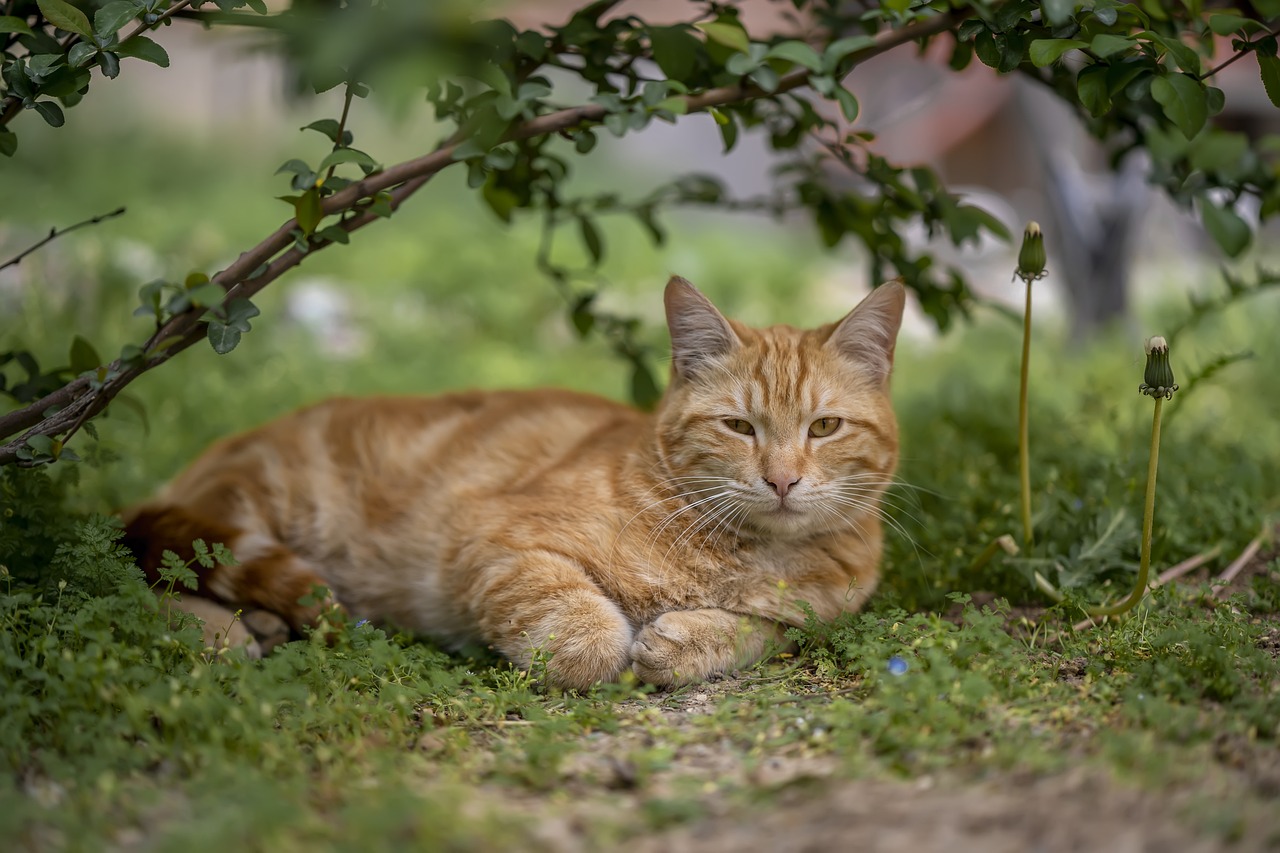
Care and Maintenance
Caring for a Persian cat is not just about providing food and shelter; it's a commitment to ensuring their happiness and well-being. These beautiful creatures, with their luxurious coats and charming personalities, require special attention to thrive. One of the most important aspects of their care is grooming. Persian cats have long, flowing fur that can easily become tangled and matted if not properly maintained. Regular grooming sessions are essential to keep their coat looking its best and to prevent skin issues. Ideally, you should brush your Persian cat at least three times a week, but daily grooming is even better. This not only helps to remove loose hair and dirt but also strengthens the bond between you and your feline friend.
When it comes to grooming tools, a wide-toothed comb and a slicker brush are your best friends. The comb helps to detangle any knots, while the slicker brush removes dead hair and stimulates the skin. Don't forget to check their ears and eyes regularly, as Persians are prone to tear staining and ear wax buildup. A gentle wipe with a damp cloth can help keep these areas clean and free from infection.
Another vital aspect of care is their diet. Persian cats can be prone to obesity, so it's crucial to feed them high-quality cat food that meets their nutritional needs without excessive calories. Look for brands that list real meat as the first ingredient and avoid fillers like corn and soy. You may also want to consider a feeding schedule that includes both wet and dry food to keep your cat hydrated and satisfied. Always ensure that fresh water is available, and consider investing in a water fountain, as many cats prefer running water.
Health maintenance is equally important. Regular veterinary check-ups will help catch any potential issues early on. Persian cats are known to have certain health predispositions, such as respiratory problems due to their flat faces, so keeping an eye on their breathing and overall health is essential. Vaccinations, flea control, and dental care should also be part of your routine. You can ask your vet for specific recommendations tailored to your cat's needs.
In summary, the care and maintenance of a Persian cat encompass grooming, diet, and health monitoring. By dedicating time to these areas, you can ensure that your Persian cat remains a happy, healthy, and affectionate companion for years to come. Remember, every little bit of effort you put into their care pays off in the form of love and companionship!
- How often should I groom my Persian cat? It is recommended to groom your Persian cat at least three times a week, with daily grooming being ideal.
- What type of food is best for Persian cats? Look for high-quality cat food with real meat as the first ingredient and avoid fillers.
- Do Persian cats require special veterinary care? Yes, regular veterinary check-ups are crucial, as Persians are prone to certain health issues.
- How can I prevent my Persian cat from becoming overweight? Monitor their food intake, provide a balanced diet, and encourage regular playtime and exercise.
Grooming Requirements
Caring for a Persian cat is a rewarding experience, but it comes with its own set of challenges, particularly when it comes to grooming. With their luxurious, long fur, Persian cats require regular grooming to maintain their stunning appearance and overall health. Think of grooming as a bonding ritual between you and your feline friend—it's not just about keeping them looking fabulous; it's also about ensuring their comfort and well-being.
One of the most important aspects of grooming is brushing. Ideally, you should brush your Persian cat's coat at least two to three times a week, but daily brushing is even better. This helps to prevent matting, which can be painful for your cat and difficult to remove. Use a wide-toothed comb or a slicker brush to gently detangle their fur, starting from the roots and working your way down to the tips. Remember, patience is key! If your cat seems agitated, take breaks and offer treats to keep the experience positive.
In addition to brushing, regular bathing is also essential. While cats are generally good at grooming themselves, Persian cats with their thick coats can benefit from occasional baths. Aim for a bath every 4 to 6 weeks. Use a high-quality cat shampoo that’s gentle and formulated for long-haired breeds. Make sure to rinse thoroughly to avoid any residue that could irritate their skin. After the bath, gently towel-dry your cat and consider using a pet-safe blow dryer on a low setting to avoid damp fur, which can lead to skin issues.
Another important aspect of grooming is nail trimming. Persian cats, like all cats, need their nails trimmed regularly—about every 2 to 3 weeks. Long nails can be uncomfortable and can lead to injury. If you're unsure how to trim your cat's nails, consult with a veterinarian or a professional groomer for guidance. It's also a good idea to check their ears and eyes regularly for any signs of dirt or discharge, as these areas can accumulate debris and require cleaning.
Finally, don’t forget about dental care! Dental hygiene is often overlooked, but it’s crucial for your cat’s overall health. Try to brush your Persian cat’s teeth at least a few times a week using a toothbrush and toothpaste specifically designed for cats. Regular dental check-ups at the vet can also help catch any potential issues early on.
In summary, grooming your Persian cat is not just a chore; it’s an opportunity to connect with your pet and ensure they lead a healthy, happy life. By following these grooming requirements, you can keep your feline companion looking and feeling their best.
- How often should I groom my Persian cat? It's best to groom them at least two to three times a week, but daily is ideal.
- Can I bathe my Persian cat too often? While occasional baths are beneficial, bathing them every 4 to 6 weeks is generally sufficient.
- What grooming tools do I need for my Persian cat? A slicker brush, wide-toothed comb, cat-safe shampoo, and nail clippers are essential tools.
- How can I make grooming easier for my cat? Start grooming when they are young, use treats to create a positive experience, and be patient.
Health Considerations
When it comes to Persian cats, understanding their health considerations is crucial for any potential owner. These beautiful felines, with their luxurious coats and sweet personalities, are prone to specific health issues that require attention. One of the most significant concerns is their brachycephalic structure, which means they have short noses and flat faces. While this gives them their distinctive look, it can lead to breathing difficulties, especially in hot weather or during physical exertion. It's essential to monitor their breathing and ensure they don't overheat.
Another common health issue in Persian cats is polycystic kidney disease (PKD). This genetic condition can lead to kidney failure, making regular veterinary check-ups vital. Early detection through ultrasound can help manage the condition effectively. Additionally, dental problems are prevalent among Persians due to their unique jaw structure. Regular dental care, including professional cleanings and at-home brushing, can prevent serious dental diseases.
Persian cats are also susceptible to obesity, which can exacerbate other health issues. A balanced diet and regular exercise are essential to maintaining their weight. Owners should be mindful of their cat's calorie intake and engage them in play to keep them active. Here’s a quick overview of the most common health concerns:
| Health Issue | Description | Preventative Measures |
|---|---|---|
| Brachycephalic Airway Syndrome | Difficulties in breathing due to their flat face structure. | Avoid overheating and monitor breathing. |
| Polycystic Kidney Disease (PKD) | Genetic condition leading to kidney failure. | Regular veterinary check-ups and ultrasounds. |
| Dental Issues | Common dental diseases due to jaw structure. | Regular dental care and professional cleanings. |
| Obesity | Excess weight that can lead to various health problems. | Balanced diet and regular exercise. |
In summary, while Persian cats are incredibly affectionate and make wonderful companions, their unique health needs require careful attention. Regular veterinary visits, a proper diet, and a good grooming routine are essential components of keeping your Persian cat healthy and happy. Remember, being proactive about their health can lead to a longer, more fulfilling life for your furry friend.
- What are the common health issues in Persian cats?
Persian cats are prone to brachycephalic airway syndrome, polycystic kidney disease, dental issues, and obesity. - How can I prevent health problems in my Persian cat?
Regular veterinary check-ups, a balanced diet, and proper grooming can help prevent many health issues. - Do Persian cats require special grooming?
Yes, their long fur requires regular grooming to prevent matting and skin issues. - Is it necessary to take my Persian cat to the vet regularly?
Absolutely! Regular check-ups are crucial for early detection of health issues.
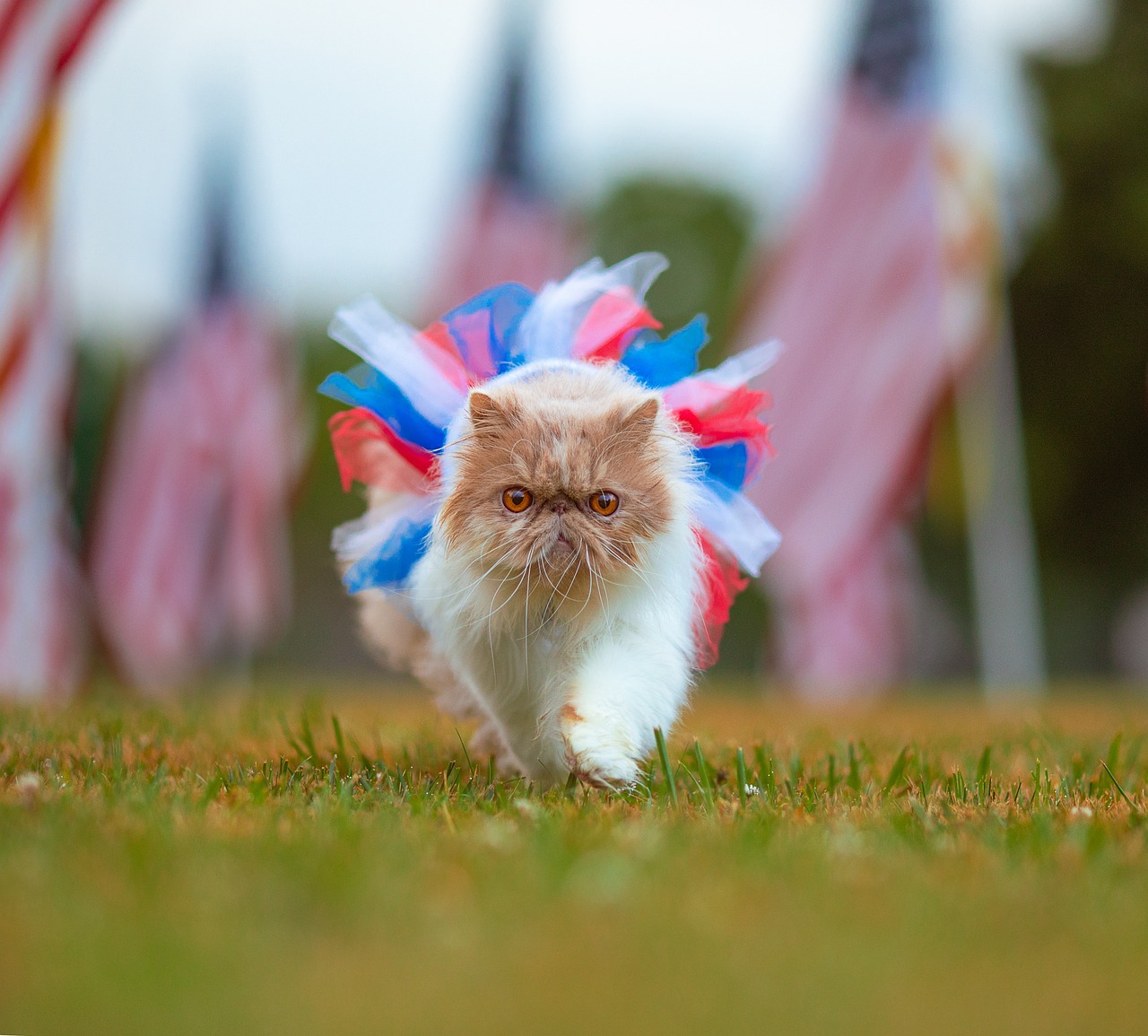
Choosing the Right Persian Cat
When it comes to choosing the right Persian cat, it’s not just about picking the fluffiest one at the shelter or the cutest one on a breeder's website. It’s a bit like choosing a life partner; you need to consider compatibility, lifestyle, and what you want in a feline friend. Persian cats are known for their unique personalities and specific care requirements, so understanding these factors can help you make a well-informed decision.
First and foremost, think about your lifestyle. Do you have a busy schedule, or are you home most of the day? Persian cats thrive on companionship and can become quite attached to their owners. If you're gone for long hours, you might want to consider adopting two cats so they can keep each other company. This can alleviate feelings of loneliness and boredom, which can lead to behavioral issues.
Next, consider the age of the cat. Kittens are playful and energetic, requiring a lot of time and patience for training. On the other hand, adult cats often come with established personalities and may already be litter trained. If you’re looking for a more laid-back companion, an older Persian might be the way to go. However, if you’re ready for the challenge and joy that comes with raising a kitten, be prepared for a whirlwind of activity!
Another essential factor is the cat's health history. Whether you’re adopting or purchasing, always ask for medical records. This will give you insight into any potential health issues the cat may face. Persian cats are prone to certain genetic conditions, such as polycystic kidney disease (PKD) and respiratory issues due to their flat faces. A responsible breeder or shelter should provide you with this information and be open about the cat's health status.
When it comes to adoption versus purchase, each option has its pros and cons. Adopting from a shelter can save a life and often comes with a lower cost, but the history of the cat may be unknown. Purchasing from a reputable breeder can ensure you receive a healthy cat with a known lineage, but it can also be more expensive. Here’s a quick comparison:
| Aspect | Adoption | Purchase |
|---|---|---|
| Cost | Usually lower | Generally higher |
| Health History | May be unknown | Typically documented |
| Age Options | Kittens and adults available | Mostly kittens |
| Saving a Life | Yes | No |
Finally, if you decide to purchase a Persian cat, finding a reputable breeder is crucial. Look for breeders who prioritize the health and well-being of their cats. They should be willing to answer your questions and provide documentation regarding the cat's health and lineage. A good breeder will also allow you to meet the kitten’s parents, giving you insight into the temperament and health of your potential new friend.
In conclusion, choosing the right Persian cat is all about finding a match that suits your lifestyle and preferences. Take your time, do your research, and remember that this adorable fluffball will be a part of your family for many years to come!
- What is the average lifespan of a Persian cat? Persian cats typically live between 12 to 17 years, depending on their health and care.
- Are Persian cats good with children and other pets? Generally, yes! They are known for their gentle and affectionate nature, making them great companions for children and other pets.
- How much grooming do Persian cats require? Due to their long fur, Persian cats need daily grooming to prevent mats and tangles.
- Do Persian cats have health issues? Yes, they can be prone to specific genetic conditions, so regular vet check-ups are essential.
Adoption vs. Purchase
When it comes to bringing a Persian cat into your home, one of the most significant decisions you'll face is whether to adopt or purchase. Each option has its own set of advantages and challenges, and understanding them can help you make the best choice for your lifestyle and preferences. Adoption often means giving a loving home to a cat in need, while purchasing from a breeder can provide you with a kitten that has a known lineage and specific traits.
Adopting a Persian cat typically involves going through a rescue organization or shelter. This option can be incredibly rewarding, as you're not only gaining a furry companion but also providing a second chance to a cat that may have faced abandonment or neglect. Shelters often have a variety of ages and personalities to choose from, allowing you to find a cat that suits your lifestyle. However, it's essential to consider that some shelter cats may come with unknown health histories or behavioral issues that could require extra patience and care.
On the flip side, purchasing a Persian cat from a reputable breeder can assure you of several things: the cat's health, temperament, and adherence to breed standards. Responsible breeders perform health screenings and often provide a warranty against genetic defects. This can be a significant advantage if you want to ensure your new pet has the best possible start in life. However, purchasing a cat can be more expensive, and it’s crucial to do your homework to avoid unethical breeding practices.
Here's a quick comparison of the two options:
| Criteria | Adoption | Purchase |
|---|---|---|
| Cost | Generally lower (adoption fees) | Higher (price of the kitten and potential additional costs) |
| Health History | Varies, may be unknown | Usually known, health screenings performed |
| Age Options | Variety of ages available | Typically kittens |
| Support | Often includes post-adoption support | Breeders may offer guidance and support |
Ultimately, the decision to adopt or purchase a Persian cat should align with your personal values and circumstances. Are you ready to open your heart and home to a cat in need, or do you prefer the assurance that comes with a purebred kitten? Whichever path you choose, remember that the most important thing is to provide a loving and stable environment for your new feline friend.
- What should I consider before adopting a Persian cat?
Before adopting, assess your lifestyle, living situation, and commitment level. Persian cats require regular grooming and attention, so ensure you can meet these needs. - How can I find a reputable breeder?
Look for breeders who are registered with cat associations, provide health guarantees, and are willing to show you their breeding practices and living conditions. - Are there any specific health issues to be aware of?
Yes, Persian cats can be prone to certain genetic conditions such as respiratory issues and kidney disease. Regular veterinary check-ups are essential.
Finding a Reputable Breeder
When it comes to bringing a Persian cat into your home, finding a reputable breeder is crucial. Not only does a good breeder ensure that you’re getting a healthy and well-socialized kitten, but they also play a significant role in preserving the breed’s integrity. So, how do you navigate through the sea of breeders out there? Here are some essential factors to consider:
First, you want to do your homework. Start by researching breeders in your area. Look for those who are members of recognized cat breeding associations, such as the Cat Fanciers' Association (CFA) or The International Cat Association (TICA). These organizations often have strict guidelines and standards that breeders must follow, which can be a good indicator of their credibility.
Next, make sure to ask the right questions. When you contact a breeder, inquire about their breeding practices, health screenings, and the environment in which the kittens are raised. A responsible breeder will be open and transparent, providing you with health records and being willing to show you the living conditions of their cats. If they seem evasive or unwilling to share this information, it might be a red flag.
Additionally, consider visiting the breeder in person. This allows you to see the kittens' living conditions firsthand and observe how the cats are treated. A good breeder will have a clean, safe environment and will be socializing their kittens from a young age. Pay attention to how the kittens interact with people; they should be curious and friendly.
Another important aspect is the breeder's commitment to the breed. A reputable breeder is genuinely passionate about Persian cats and is focused on improving the breed rather than just making a profit. They should be knowledgeable about the breed's characteristics, potential health issues, and the specific needs of Persian cats.
Lastly, don't forget to check references. Ask the breeder for contact information of previous customers. Speaking to other cat owners who have purchased from the same breeder can provide valuable insights into their experiences and the quality of the kittens they received.
In summary, finding a reputable Persian cat breeder involves:
- Researching breeders affiliated with recognized cat associations.
- Asking detailed questions about breeding practices and health screenings.
- Visiting the breeder’s facility to observe the living conditions.
- Ensuring the breeder is passionate about the breed.
- Checking references from previous customers.
By taking these steps, you can feel confident that you are choosing a healthy, happy Persian cat that will bring joy to your life for years to come.
- What should I look for in a Persian cat breeder?
Look for breeders who are members of recognized cat associations, maintain high breeding standards, and are transparent about their practices. - How can I tell if a breeder is reputable?
A reputable breeder will be open to questions, willing to show you their facilities, and will provide health records for their kittens. - Is it better to adopt or buy from a breeder?
Both options have their pros and cons. Adoption gives a home to a cat in need, while buying from a breeder can ensure specific traits and health screenings.
Frequently Asked Questions
- What are the main types of Persian cats?
Persian cats come in various types, primarily categorized by their color and pattern. You can find solid colors, bicolors, and patterned variations like tabbies. Each type has its unique charm, making them all special in their own way!
- How do I care for a Persian cat's grooming needs?
Grooming is essential for Persian cats due to their long, luxurious fur. Regular brushing, ideally daily, helps prevent matting and keeps their coat shiny. Don't forget to check their eyes and ears regularly, as Persian cats can be prone to tear staining and ear infections.
- What health issues should I be aware of with Persian cats?
Persian cats can be susceptible to certain health problems, including breathing issues due to their flat faces, kidney disease, and dental problems. Regular veterinary check-ups and a healthy diet can help manage these risks and keep your furry friend in tip-top shape!
- Should I adopt or purchase a Persian cat?
Deciding whether to adopt or purchase a Persian cat is a big decision! Adoption can be a rewarding experience, giving a home to a cat in need, while purchasing from a reputable breeder ensures you know the cat's lineage and health history. Consider your lifestyle and preferences before making a choice.
- How can I find a reputable Persian cat breeder?
When looking for a reputable breeder, do your homework! Look for breeders who are registered with cat associations, ask for references, and visit their facilities if possible. A responsible breeder will prioritize the health and well-being of their cats and provide you with all the necessary information.
- What personality traits are common in Persian cats?
Persian cats are known for their calm and affectionate nature. They tend to be gentle and enjoy lounging around, making them great companions. However, each cat has its own personality, so you might find some more playful or independent than others!
- What are the most common color variations in Persian cats?
Persian cats come in a stunning array of colors! Some of the most popular solid colors include white, black, and cream, while patterned variations like the classic tabby or bicolor add to their visual appeal. Each color and pattern has its own breed standards, making them even more fascinating!

